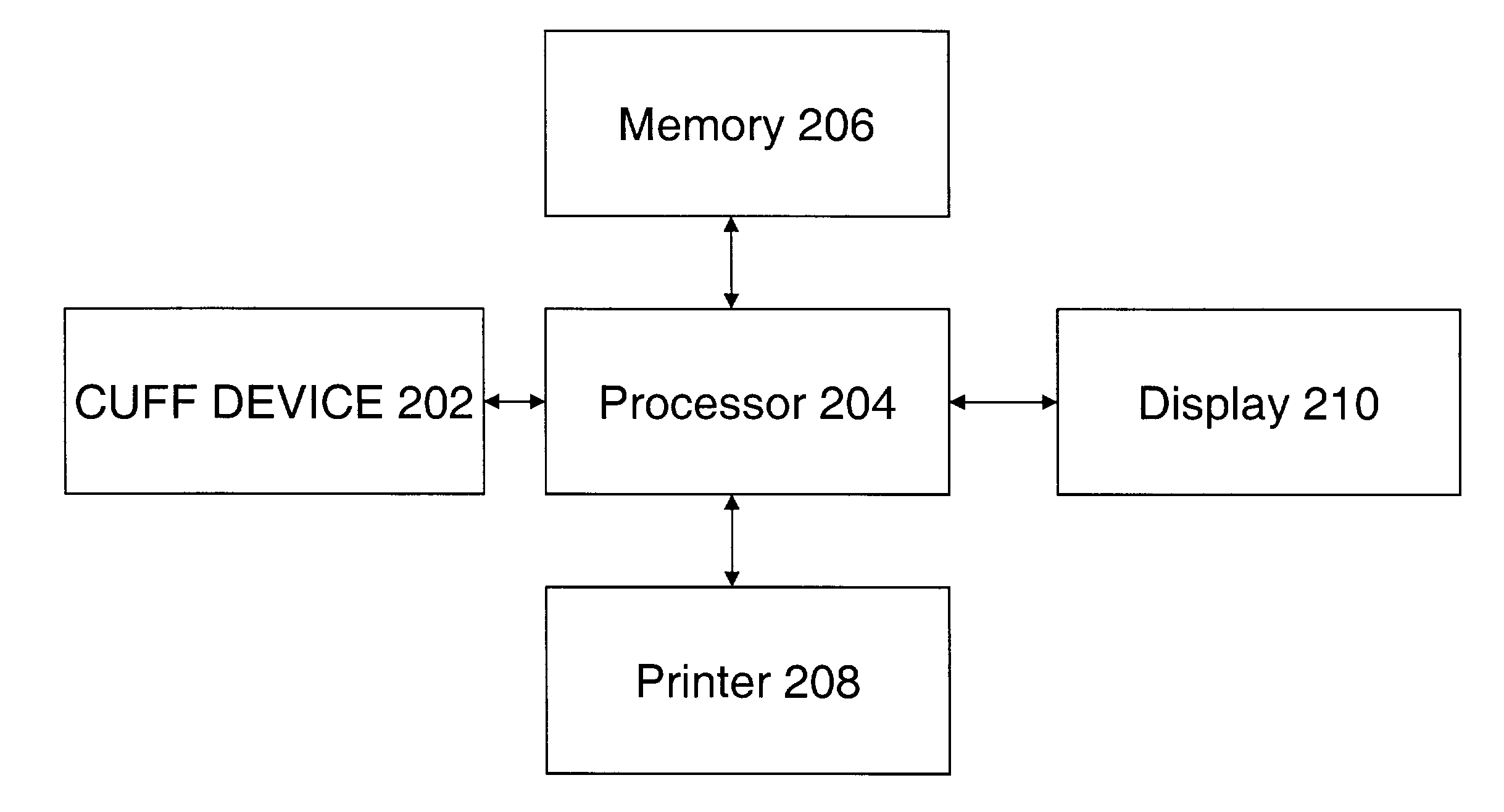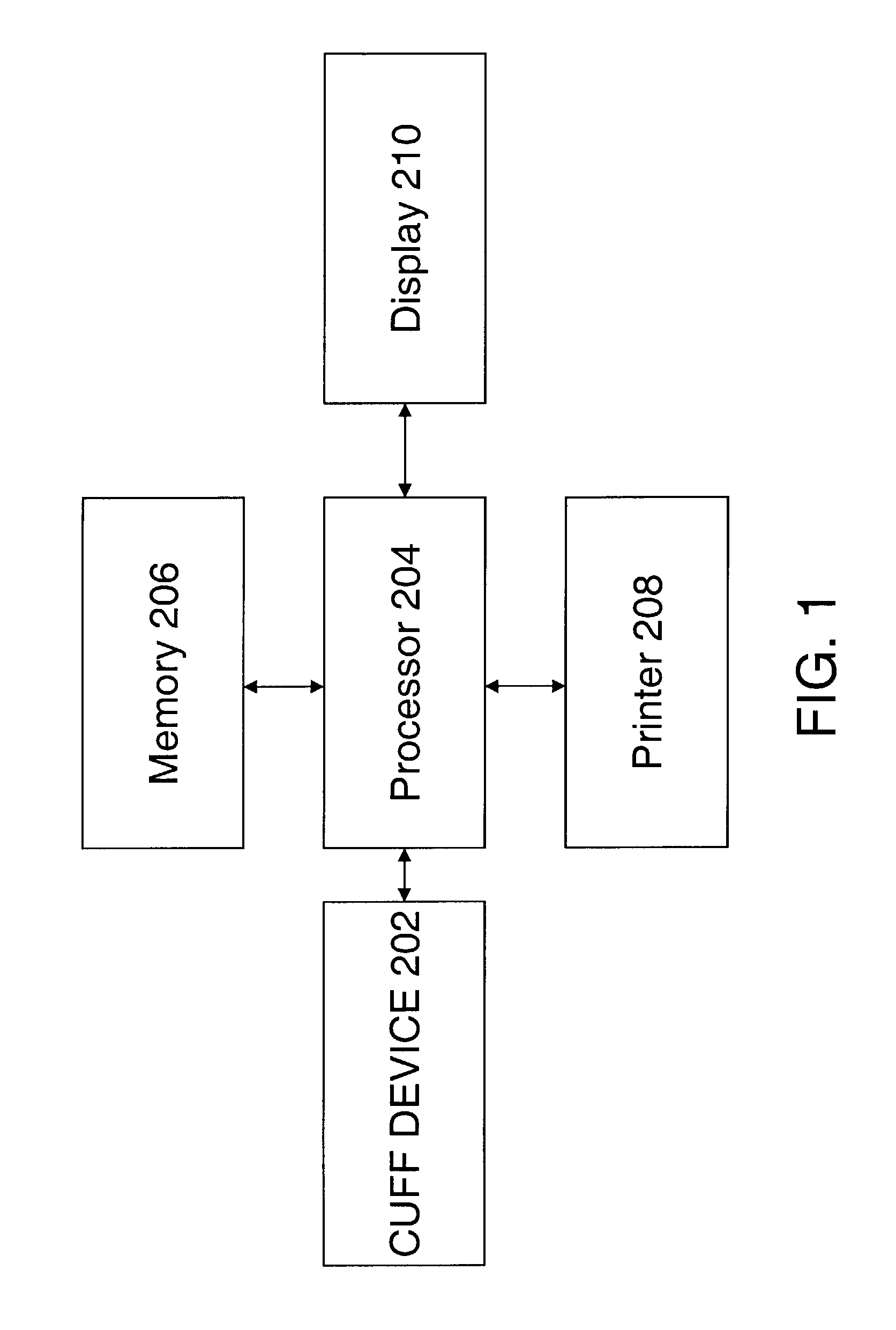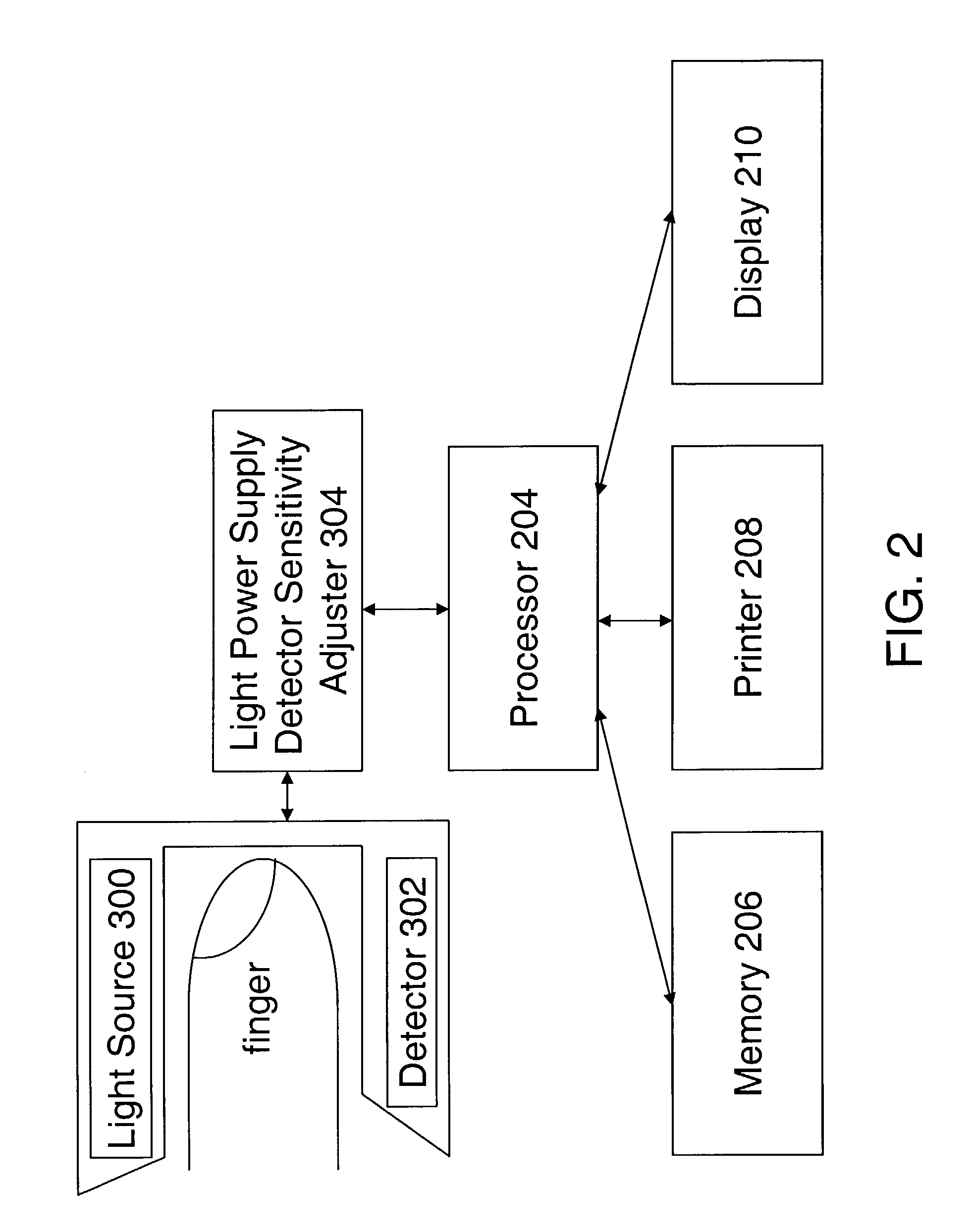Method of and apparatus for detecting atrial fibrillation
a technology of atrial fibrillation and detection method, which is applied in the field of detection method and apparatus for atrial fibrillation, can solve the problems of irregular heartbeat pattern, many rhythm abnormalities, and high risk of heart failure, and achieve the effect of improving the detection accuracy and accuracy of atrial fibrillation
- Summary
- Abstract
- Description
- Claims
- Application Information
AI Technical Summary
Benefits of technology
Problems solved by technology
Method used
Image
Examples
Embodiment Construction
[0045]FIG. 1 shows an embodiment of the invention in which pulse beats are detected using an inflatable cuff device 202. The inflatable cuff device 202 may be a known apparatus used to measure blood pressure using oscillometric or auscultatory means.
[0046]The inflatable cuff device 202 is placed around an appendage such as an arm and inflated above systolic pressure. While the cuff is deflated, the pulse beats are detected. The cuff deflation may be stopped and the cuff may remain at a fixed pressure to allow for monitoring of the pulse beats during a constant cuff pressure. The time of each pulse beat is delivered to a processor 204, which includes instructions that carry out the method described above.
[0047]Further, the processor 204 stores the time of each pulse beat, the intervals between pulse beats and other information in a memory 206. The memory 206 may include RAM or other device memory or include a hard disc, a floppy disk or other memory devices. The processor 204 may com...
PUM
 Login to View More
Login to View More Abstract
Description
Claims
Application Information
 Login to View More
Login to View More - R&D
- Intellectual Property
- Life Sciences
- Materials
- Tech Scout
- Unparalleled Data Quality
- Higher Quality Content
- 60% Fewer Hallucinations
Browse by: Latest US Patents, China's latest patents, Technical Efficacy Thesaurus, Application Domain, Technology Topic, Popular Technical Reports.
© 2025 PatSnap. All rights reserved.Legal|Privacy policy|Modern Slavery Act Transparency Statement|Sitemap|About US| Contact US: help@patsnap.com



